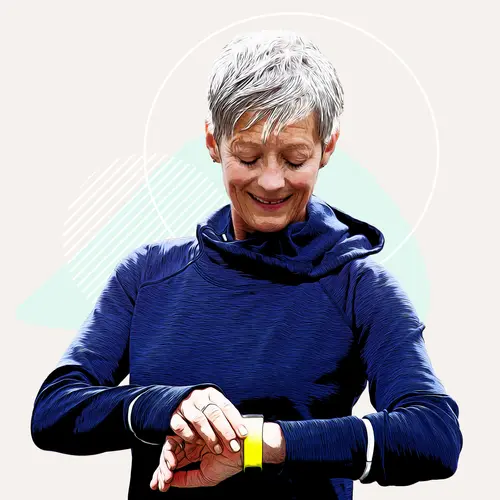May 1, 2000 (San Francisco) -- Three days before Thanksgiving rolled around last fall, I turned to the section on nursing homes in the Yellow Pages. No, I wasn't scouting out emergency care possibilities for an older relative. I was looking for a place to visit with my 18-month-old twins, a place that would distract me from my usual holiday tally of every odd remark uttered by my extended family.
At 10 a.m. Thanksgiving morning, I pushed the stroller into the Jewish Home for the Aged, a lovely, old brick building with colorful artwork on the walls. At the end of a hallway sat seven women, dressed in stylish pantsuits, who greeted us with the ardor of long-suffering fans finally rewarded by the appearance of a matinee idol, or suave singer Tom Jones, perhaps.
"Twins! A boy! A girl!"
A lanky, smooth-faced woman stood and bowed to me. Her petite friend gave us the thumbs-up. "You are the mother! Most wonderful!"
At least, I think that's what they were saying. Mostly, they spoke Russian. We strolled on. At every turn, the twins, Claire and Drew, let kind strangers stroke their cheeks and rub their chubby legs. Claire rode on Mrs. Glickman's lap in a wheelchair; Drew tossed around the pink slippers in Mrs. Vanoss' closet.
A Boost to the Health as Well as the Spirits
We knew we were having a great time. What we didn't know was that our presence was reducing the residents' need for antidepressants, boosting their immune systems, cutting back the incidence of ulcers, and, as our visits continued over the following months, giving Mrs. Vanoss a reason to live.
But those kinds of dramatic effects are what the studies demonstrate. William H. Thomas, MD, has tracked the effects of surrounding nursing home residents with pets, plants, and children as part of his nursing home revolution known as "the Eden Alternative." In the first "Edenizing" nursing homes in upstate New York, Thomas reported after one year a decrease in the use of all medications, a decline in the incidence of new ulcers, and a drop in staff absenteeism, compared to a control facility.
Intrigued, Southwest Texas State University researchers studied five "Edenizing" nursing homes in Texas over a two-year period and reported their findings in the Texas Journal on Aging. They found a 57% reduction in the incidence of new ulcers, a 48% reduction in staff absenteeism, an 18% reduction in restraint use, and a 60% reduction in reports of altercations between residents, compared to control facilities.
"Companionship is food and drink for the human spirit," says Thomas. Take away what he calls "the three plagues" of loneliness, helplessness, and boredom, and the body will respond, he theorizes. "There is a spiritual dimension to a human life."
Putting Life Into Nursing Homes
The Eden Alternative is a program to inject life into nursing homes. Much as giving birth has been transformed by "birthing centers" and Lamaze classes, Thomas hopes to transform the way we grow old in nursing homes. Most people, he says, literally would rather die than be admitted to one of these facilities. But it needn't be so.
Thomas introduced the Eden Alternative in 1991 at Chase Memorial Nursing Home in New Berlin, N.Y. Since then, the philosophy has spread to 192 nursing homes around the country and been adopted less formally by many more. The idea is to involve residents in relationships with dogs, cats, birds, rabbits, plants, and children. Don't just have the Brownies in on holidays, he says. Have a nursery school in the building so older people can read to children.
More than 50% of residents in long-term care facilities have no visitors, says Kathy Segrist, PhD, director of the Institute on Aging at Temple University, Philadelphia. While human relationships are great, connections with plants and animals also can be vital. "It's amazing what dirt and some plants can do," says Segrist, who helped to bring plants into five Pennsylvania nursing homes. "People came out of their rooms to put seeds in pots."
The very young and the very old are a natural match, I discovered. Time is different at both the beginning and the close of life; there seems to be no end of it. The old people need the exuberance of the young; the young need the quiet of the old.
On our fourth visit, Mrs. Vanoss, a former professional violinist, wasn't in her room. "In the hospital," said the nurse at the desk. Knowing Mrs. Vanoss would be bereft without her radio, Drew and I arrived at her hospital room carrying an old boom box. Stunned, she seemed to improve right before our eyes. "As long as I have music, I can keep going," she said, rousing herself up on her pillow. "You . . . coming to see me . . . bringing the music . . . the baby is with you . . . " She threw us a kiss.
Jane Meredith Adams is a San Francisco writer. Her work has appeared in The Boston Globe and numerous other publications. She is also the co-author of The Last Time I Wore a Dress (Riverhead, 1998).

